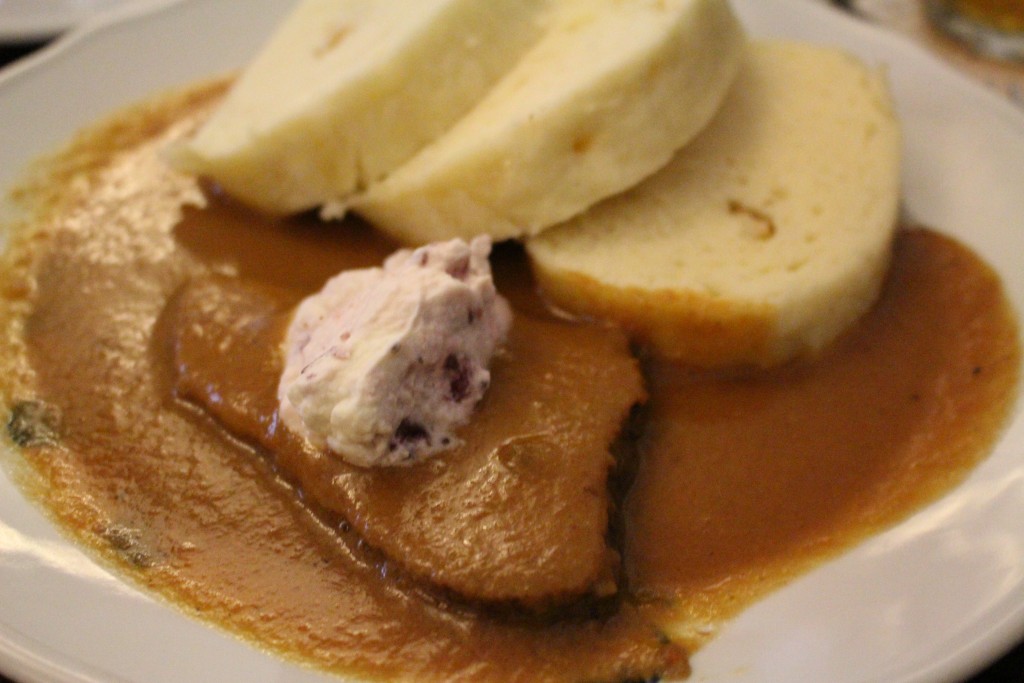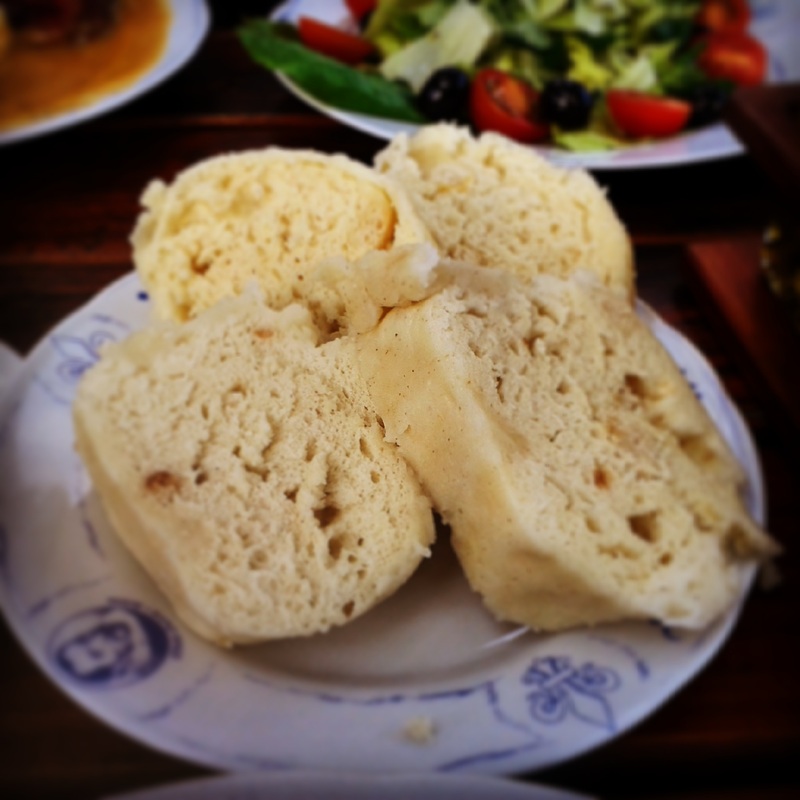|
Since the Velvet Revolution of 1989, Prague has been undergoing a transformation in all areas of city life. And probably in no other area (except for the obvious – politics and governance) has it gone through a bigger change than in the area of food and dining. When I arrived here in 1992, not only was a good, tasty meal hard to come by, but sometimes any meal was hard to find. Most restaurants were still state-owned at that time, and more often than not, the staff would turn you away, even with all the tables empty, saying simply, “We’re full.” So, you’d have to continue your search until you found a place that would even serve you. A surer bet in those days was a typical Czech pub offering standard Czech fare. But the quality of the food was not good, and you could be sure that you would be dining in a room so thick with cigarette smoke that sometimes your eyes would burn to the point of watering. And you could forget about variety and choice or any fresh vegetables (or, really, any vegetables at all other than boiled or pickled cabbage). Orange juice simply did not exist in the country, but Czech beer was always abundant, cheap and wonderful. That is still true for beer – though it’s not as cheap as it once was, it is still cheaper than water, Coke or, yes, the orange juice that I’m glad we have now! These days, far from being associated with bland, heavy food, Prague has become known in some circles in Europe as a kind of “dining destination.” The city center is packed with more restaurants than you would think could survive, but most of them do thanks to the tremendous numbers of tourists who visit year-round. And now (perhaps surprisingly, given the fact that many of the establishments cater to a captive tourist crowd) it’s hard not to find a good meal in Prague.
Dumplings are a staple in Czech dishes. Czech dumplings come in many kinds and varieties. The basic categories are bread dumplings (“houskové knedlíky”) or potato dumplings (“bramborové knedlíky”). Then there are fruit dumplings (“ovocné knedlíky”), sometimes served as a dessert or, more commonly, as a main dish (a “sweet lunch,” as the Czechs call it). If the idea of a “sweet lunch” sounds a bit strange, think of pancakes or French toast served all day at an IHOP or Waffle House in the US (or at finer establishments for brunch). Within these categories, there are many varieties, such as “špekové knedliky” (bacon dumplings) and “Karlovarské knedliky” (made with fresh parsley). Bread dumplings, pictured above, are made with wheat flour as the name implies. The dough is rolled into logs, steamed and then sliced very carefully with string. Though the name “dumpling” and their appearance conjures images of a heavy food and a stuffed belly, bread dumplings, if prepared properly and well, are actually rather light and fluffy. When dipped into sauce, however, they do get heavier (more on sauces later). Potato dumplings are made with flour and potatoes, of course, and are heavier than bread dumplings. Fruit dumplings are usually made with a yeast and cream cheese dough and are filled with fruit, usually whatever fruit is in season. Most common are apricot, plum or strawberry. They are usually served with sugar and melted butter drizzled over them along with “tvaroh” cheese (a kind of cream cheese like that found in a Danish pastry) crumbled on top. When the fruit inside is fresh, they are absolutely delicious, and if you do have them as a meal, you’d be surprised at how well they go with a good Czech beer! Despite all of the above, the most important thing to remember about dumplings is this: dumplings are intended to be served only as an accompaniment to certain dishes, and only certain kinds of dumplings go with certain (almost always meat) dishes. Other than fruit dumplings and other “sweet” dumplings, like those stuffed with poppy seeds for a delicious dessert, Czech dumplings are never meant to be eaten on their own. This point is important because most people (most of us Americans, at least), think of dumplings as something moist that can be eaten – or that can at least be tasted – on their own or added to various dishes at whim. This is not the case with Czech dumplings. On their own they have very little taste and are quite dry. That is why they are always served with something and it is also why only certain kinds of dumplings go with certain dishes. These dishes are ones that come served in some kind of sauce, and that is why dumplings can be served with them: think of Czech dumplings as starch “fillers” that need a lot of sauce to give them flavor so that you can get them down. To find great dumplings and other Czech food when you're in Prague, have a look at my Prague restaurant guide or some of the places by clicking here.
0 Comments
Welcome to “The Prague Blog.” In its pages I’d like to introduce you to one of the most beautiful cities in the world. Though of course I might be biased, if you’ve ever visited Prague, you’ll know that my opinion is not completely without some (or a lot of) objective basis and merit. And if you’ve not yet been to Prague, I hope you’ll have the chance to visit one day and be struck by the city’s beauty, as I was the first time I visited here more than two decades ago. Prague’s attraction doesn’t stem solely from its beauty. It has a mystery that can be felt as you wander through its winding medieval streets. And the rich history of Prague is another thing that surprises many first-time visitors. From the Old Town to the Malá Strana to the Jewish Quarter, history seems to leap from every cobblestone you tread upon. I’m an American who has lived and worked in Prague for more than two decades. Prague’s pull on me was so strong that after my first stay for a holiday in the summer of 1990, the first summer after the Berlin Wall fell, I vowed to return – to live. And I did. It took some time and some doing, but I moved here in 1992 and never left (except for a few years in the late 1990s when I relocated to Washington, DC, during my tenure at the World Bank). I have lived, loved and experienced Prague on many levels and in its many aspects. I’ve walked her streets over and over, never tiring of seeing the same gorgeous Baroque palace multiple times or marveling at the views as I cross the 700-year-old Gothic Charles Bridge for the umpteenth time. I’ve studied Prague’s history, met her people and heard their stories and their music.
|
YOUR DONATION HELPS ME KEEP THIS BLOG GOING.
Even a small donation will help and is much appreciated! Consider making a donation today!
AuthorI am an American who has been living in Prague for two decades. After a long career in international finance, I left the business world to pursue other interests. I now work as a writer, mentor and guide to the city. Archives
February 2024
Categories
All
|





 RSS Feed
RSS Feed